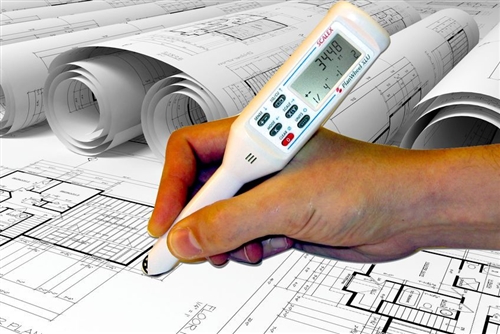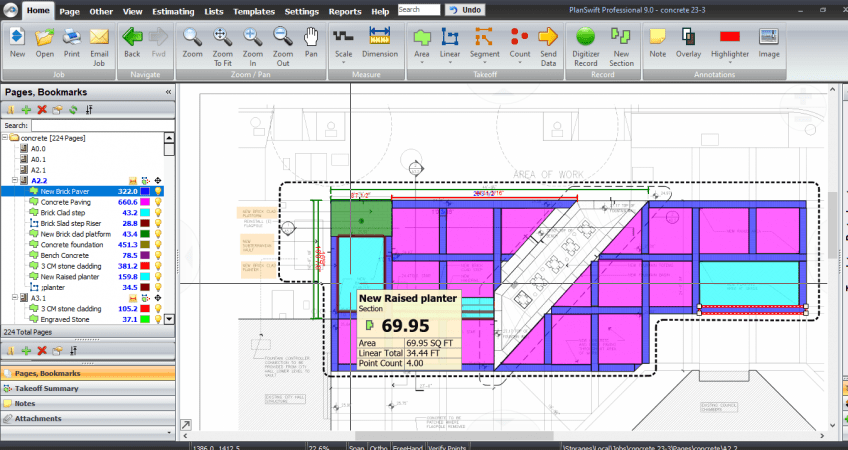What is QTO? “QTO” stands for Quantity Takeoff Service and it is a list of material quantities (MTOL). Professional estimators typically provide Material Takeoff Services, which companies like QTO Estimating can offer as an outsourced solution. However, Real Estimating provides Material Takeoff Service across the USA. We provide fast and accurate construction estimating services for contractors, general contractors, sub-contractors, and business owners.
We provide comprehensive Material Takeoff Service in both commercial and residential sectors.
Our team provides preliminary Material Takeoffs Service to help with decision-making regarding design and finances before investing significant resources in a project. We work with basic construction Drawings, focusing on crucial step of preliminary planning to ensure success of the entire project.
Get 40% Off Send Your First Plan (Material Takeoff Service)
Like what we are offering? Get In Touch with Us for Our Blueprint Material Takeoff Service by Calling +1-917-725-4172 or info@realestimateservice.com
OUR MAIN SERVICES – Real Estimate Services – Material Takeoff – Quantity Takeoff
- Electrical Estimation
- Masonry Estimation
- Material Takeoff Service
- Drywall Estimation
- Roofing Estimation
- Concrete Estimation
- Cost Estimation
- Construction Takeoff
- Lumber Takeoff Services
- Finishing Estimation Services
Accurate and Comprehensive Material Takeoff Service by Real Estimates.
Real Estimate Services offers unparalleled material takeoff estimates, providing comprehensive and precise calculations for a wide range of construction materials. Their attention to detail and accuracy ensures that clients receive reliable estimates for concrete, steel, roofing materials, and interior finishes. With us, clients can confidently proceed with their projects knowing that they have access to reliable and trustworthy takeoff estimates.
Exclusive Offer: 40% Off Your First Cost Estimate – Contact Us Today! +1-917-725-4172
Real Estimate Services: Your Ultimate Source for CSI Estimations
Real Estimate Services specializes in delivering precise CSI estimates, offering clients detailed and comprehensive breakdowns of construction costs. Their expertise ensures that clients receive accurate estimations for materials, labor, equipment, and overhead, aligning with industry standards. With Real Estimate Services‘ CSI estimates, clients can make informed decisions, stay within budget, and effectively manage their construction projects. Trust Real Estimate Services to provide the essential CSI estimates that drive the success of your construction endeavors.
Comprehensive Quantity Takeoff Services Across All CSI Divisions:
Quantity takeoff services across all CSI divisions can be incredibly valuable for construction projects. It ensures comprehensive cost estimating and project planning, covering a broad range of construction elements. Having this breadth of coverage enables clients to have a thorough understanding of the materials and labor required for their projects.
The Construction Specifications Institute (CSI) has 50 divisions that are used for organizing construction information. Some of the common CSI divisions include:
- General Requirements
- Site and Infrastructure
- Concrete
- Masonry
- Metals
- Wood, Plastics, and Composites
- Thermal and Moisture Protection
- Doors and Windows
- Finishes
- Specialties
- Equipment
- Furnishings
- Special Construction
- Conveying Equipment
- Mechanical
- Electrical
We use these divisions to categorize various aspects of construction projects and organize specifications and other project information.
Accurate and Detailed Estimates:
Real Estimate Service is a trusted provider of outsourced construction services in the USA. They specialize in offering accurate and detailed estimates for various aspects of construction projects, including material takeoffs, cost estimation, etc. By leveraging their expertise and knowledge, Real Estimate Service assists construction companies in streamlining their operations and making informed decisions.
WHO ARE OUR CLIENTS AND HOW WE ASSIST THEM WITH QUANTITY TAKEOFF SERVICES?
Our clients come from various sectors and we assist them with comprehensive services by providing accurate and reliable estimates. Here’s how we support our clients:
- We provide contractors with detailed quantity takeoffs for bidding and construction purposes, enabling them to accurately estimate project costs and materials.
- Our quantity takeoff services aid architects and engineers in project planning and design by providing precise material and labor estimates.
- We support developers by offering detailed quantity takeoffs that assist in budgeting, cost analysis, and procurement planning.
- Subcontractors receive detailed estimates for their specific scope of work, helping them prepare accurate bids and manage project costs.
- We assist project managers by providing comprehensive quantity takeoffs that aid in project scheduling, budgeting, and resource management.
- Our services support government agencies by providing detailed estimates for public infrastructure projects, helping in accurate budgeting and resource allocation.
- We aid real estate developers by offering detailed takeoffs for construction projects and supporting them in cost estimation and project planning.
We contribute to the efficiency, cost-effectiveness, and successful execution of client’s projects through our accurate and reliable quantity takeoff services.
Construction Takeoff Services – Material Takeoff Estimates
Real cost estimation services lead top quality construction takeoff services and material takeoff service.
Learn more about : Real Estimating Services – Material takeoff services
In engineering and construction, material take-off refers to a list detailing the quantities and types of materials needed. This list is generated by analyzing a blueprint or other design documents and is often called the material take-off list (MTOL).
Material take-off includes not only the quantity of required materials but also their weight. Determining the total weight of the items is crucial for deciding the best way to move them once construction is completed. Get to know more about us! 
MATERIAL QUANTITIES – Material Takeoff Service
One of the primary purposes of a material takeoff is to provide a detailed list of materials necessary to complete a construction project. Depending on the scale of the project and its complexity, the list of materials can be relatively short or very long. To prepare a material takeoff, the estimator or contractor first identifies the exact materials needed to complete a project. They gather this information directly from blueprints, architectural drawings, or project plans. When a subcontractor is responsible for preparing a material takeoff, they may refer to their project notes to determine the required materials.
First, provide a simple count for prefabricated materials. These include things like light fixtures, hinges, windows, or doors.
Second, some materials will need to be quantified using length. This approach is most commonly used for materials like lumber, steel piping, molding, and ducting.
Third, some materials must be quantified using volume. This is useful for liquid materials, such as concrete or asphalt. To determine the volume of a required material the person preparing the estimate will need to be familiar with relevant calculations for determining volume.
Lastly, some materials will need to be quantified using the area. Use area measurements for materials like flooring, roofing, or tile, often provided in square feet.
Important Considerations:
The first is weight. Not all material takeoffs provide the weight of materials required for a project. Including weight in a material, takeoff is necessary because it helps determine the shipping and transportation costs for the associated materials.
While the weight of specific materials may not be relevant for smaller projects, for large projects where the logistics of getting materials to the job site can result in significant costs the weight of materials is a useful metric to include in a material takeoff.
A second crucial component of nearly all material takeoffs is detailed product descriptions. These descriptions serve as a reference for ordering materials for a project, ensuring that the correct materials are selected. For instance, if the engineer specifies requirements for a load-bearing beam, such as the size of the lumber and any special treatments, the material takeoff must include this information. Accurate descriptions not only guarantee the correct materials are ordered but also ensure the material cost estimate for the project is precise.

SAY GOODBYE TO HR HASSLE HIRING FULL-TIME ESTIMATORS
Having a full-time estimator is expensive. Outsourcing estimation means the absence of overhead costs such as benefits, computers, and a workspace. Just imagine, no weekly salary to pay in slow periods, no employee benefits, no sick pay, no vacation pay, etc. Can you see the savings adding up already? Outsourcing not only saves your hours of training, but billable hours mean that the hours needed to complete the project. Additionally, looking to logistics, employees have a wide array of rights under laws. Therefore, this opens a variety of legal claims employees can potentially bring against you for violating those rights.
![Construction Material Take Off [Ultimate Guide in 2020]](https://measuremanage.com.au/wp-content/uploads/2019/12/Construction-Material-Takeoff.jpg)
It is true when you don’t get many orders regularly, but you still need quality take-offs from time to time. If your project requires a part-time engagement then outsourcing is an obvious choice.
It is not cost-effective to keep an estimator on staff. Using our Service for your material take-offs will cost you less than hiring a full-time estimator and bearing related responsibilities.

